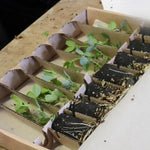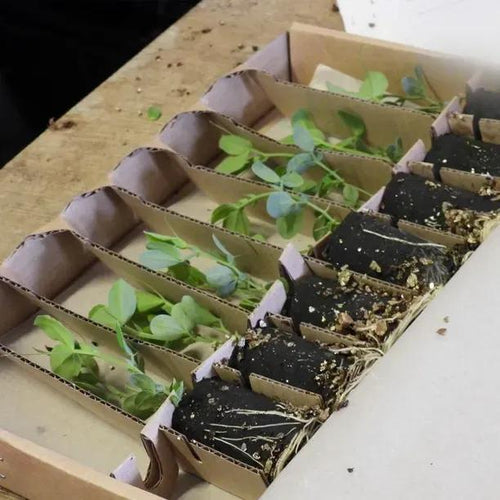'Turquoise Lagoon' Sweet Pea Plants
What a sublime beauty of a sweet pea! Turquoise Lagoon may well transport you straight to the Caribbean, with its pale pink buds opening lavender and changing gradually to the softest of blues, the colour of lapping waves or a picture-postcard tropical sunset. It'll even morph, from lavender to blue, when cut and arranged in a vase. Turquoise Lagoon is slightly shorter than most sweet peas, at 1.5m or so, but the scent is magnificent, and it's a prolific flowerer. As always with sweet peas, train them up an obelisk or trellis, guiding the young shoots in at first to help them find a foothold.
Browse our sweet pea range.
Our Sweet Peas are delivered in purpose-designed, recycled cardboard packaging, and are ready to be planted out when you get them.
We generally send them out between March and May, but we will email you with the likely delivery timescale once you have placed your order.
Features
- Colour: pale lavender to turquoise blue, changing even when picked and in a vase
- Stem: medium
- Height: 1.5m
- Type: Shifter
- Scent: excellent
- Flowering: June to September
- Planting Months: March-June
Garden Design Ideas
Sweet peas are a cottage garden classic and Turquoise Lagoon will combine effortlessly in a mixed border with other favourites of the English garden, among them Cosmos, whose pastel-coloured flowers will bob and float prettily below a wigwam of sweet peas. Lavender, too, makes a lovely companion: a double whammy of scent and pinky purple hues. It's a good idea to grow a couple of varieties of sweet pea, for added interest in vases.
Remember not to let your sweet peas go to seed – keep picking them, and they'll go on and on producing more flowers right into autumn.

 Secure, One-Tap Checkout
Secure, One-Tap Checkout
 Hand Picked, Delivered to Your Door!
Hand Picked, Delivered to Your Door! 1 Year Bareroot Guarantee
1 Year Bareroot Guarantee




